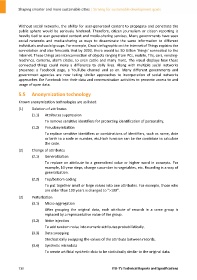Page 720 - Shaping smarter and more sustainable cities - Striving for sustainable development goals
P. 720
Without social networks, the ability for user‐generated content to propagate and penetrate the
public sphere would be seriously hindered. Therefore, citizen journalism or citizen reporting is
heavily tied to user generated content and media‐sharing services. Many governments have seen
social networks and media‐sharing as ways to disseminate the same information to different
individuals and social groups. For example, Cisco's infographic on the Internet of Things explains the
connotation and also forecasts that by 2020, there would be 50 Billion 'things' connected to the
Internet. These things are interconnection of objects ranging from PCs, mobile, TVs, cars, vending‐
machines, cameras, alarm clocks, to even cattle and many more. The visual displays how these
connected things could make a difference to daily lives. Along with multiple social networks
presence: a Facebook page, a YouTube channel and so on. Many different governments and
government agencies are now taking similar approaches to incorporation of social networks
approaches like Facebook into their data and communication activities to promote access to and
usage of open data.
5.5 Anonymization technology
Known anonymization technologies are as listed:
(1) Deletion of attributes
(1.1) Attributes suppression
To remove sensitive identifiers for protecting identification of personality.
(1.2) Pseudonymization
To replace sensitive identifiers or combinations of identifiers, such as name, date
or birth to a code or number, etc.Hash function can be the candidate to calculate
the code.
(2) Change of attributes
(2.1) Generalization
To replace an attribute to a generalized value or higher word in concepts. For
example, 10‐year steps, change cucumber to vegetables, etc. Rounding is a way of
generalization.
(2.2) Top/bottom coding
To put together small or large values into one attributes. For example, those who
are older than 100 years is changed to ">100".
(3) Perturbation
(3.1) Micro‐aggregation
After grouping the original data, each attribute of records in a same group is
replaced by a representative value of the group.
(3.2) Noise injection
To add random noise into numeric attributes probabilistically.
(3.3) Data swapping
Stochastically swapping the values of the attribute between records.
(3.4) Synthetic microdata
To create artificial synthetic data to be statistically similar to the original data.
710 ITU‐T's Technical Reports and Specifications

